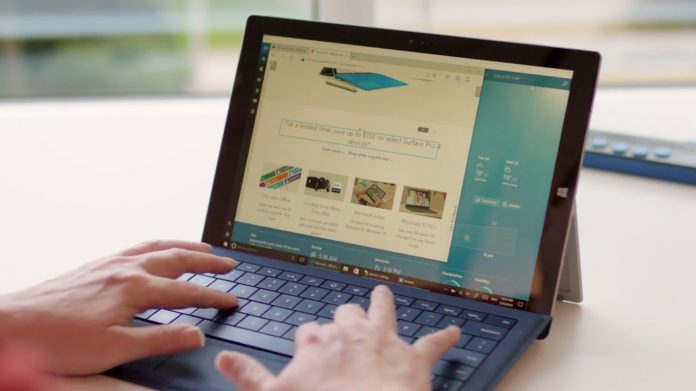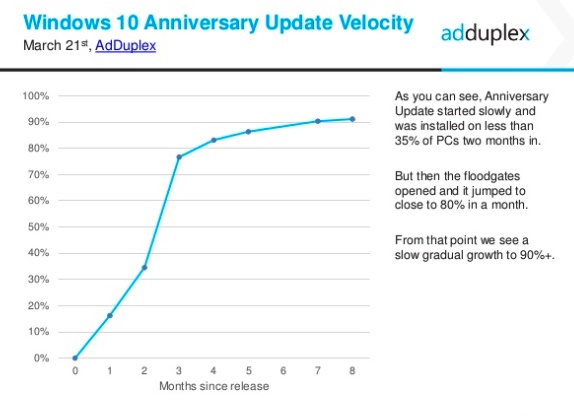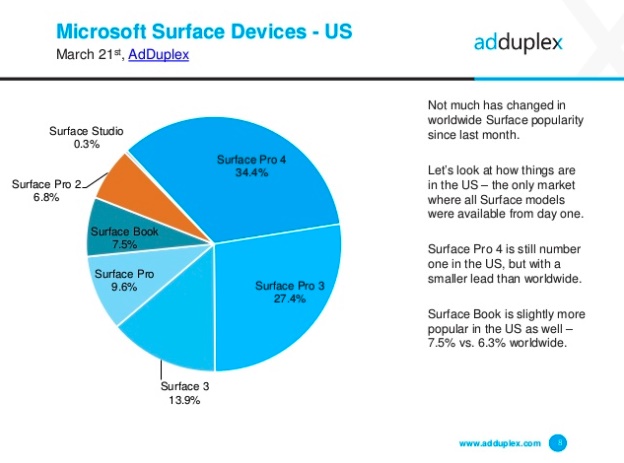In its report, the company does show Windows 10 PC is faring, growth of Surface devices. If you are unsure how AdDuplex surveys the market, here’s a refresher. The company studies Windows Store app data from applications running the AdDuplex SDK. Naturally, not all apps have the SDK, so it is not a true picture of the Windows ecosystem. That said because the company tracks data monthly, it shows a general feel of how Windows versions are performing. For Windows 10 for PCs, AdDuplex shows that the Anniversary Update is running on 91.2% of all sampled Windows 10 machines. This is fantastic news for Microsoft ahead of the Creators Update launch next month.
Since then, Anniversary Update adoption has continued a steady monthly upturn. AdDuplex points out that the performance of the Anniversary Update points to how well the Creators Update will do: “This should give us an estimage of how fast we should expect Creators Update to rollout and a benchmark to compare to later on,” explained the company. The last month has not been hugely important for Anniversary Update adoption. The upgrade was launched last August and the biggest spike came between October and November. Through that month, it jumped from 35% to 80%. This hike reflected Microsoft’s staged roll out of the build.
Surface Devices
Microsoft’s own devices continue to perform well. However, the high-end Surface Book and Surface Studio are not successful enough to rank with AdDuplex. The firm shows that Microsoft has a market share below 3% in the US, UK, and Germany.
Studying Surface device use in the United States, AdDuplex found the Surface Pro 4 is by far the most popular. It has a 34.4% share of sampled devices, the Surface Pro 3 is at 27.4%, while the Surface 3 is at 13.9%. The already mentioned Surface Book is doing well at 7.5%. The ultra-niche Surface Studio barely makes a mark at 0.3%. “Surface Pro 4 is still number one in the US, but with a smaller lead than worldwide,” added the company. “Surface Book is slightly more popular in the US as well -7.5% vs 6.3% worldwide.”






